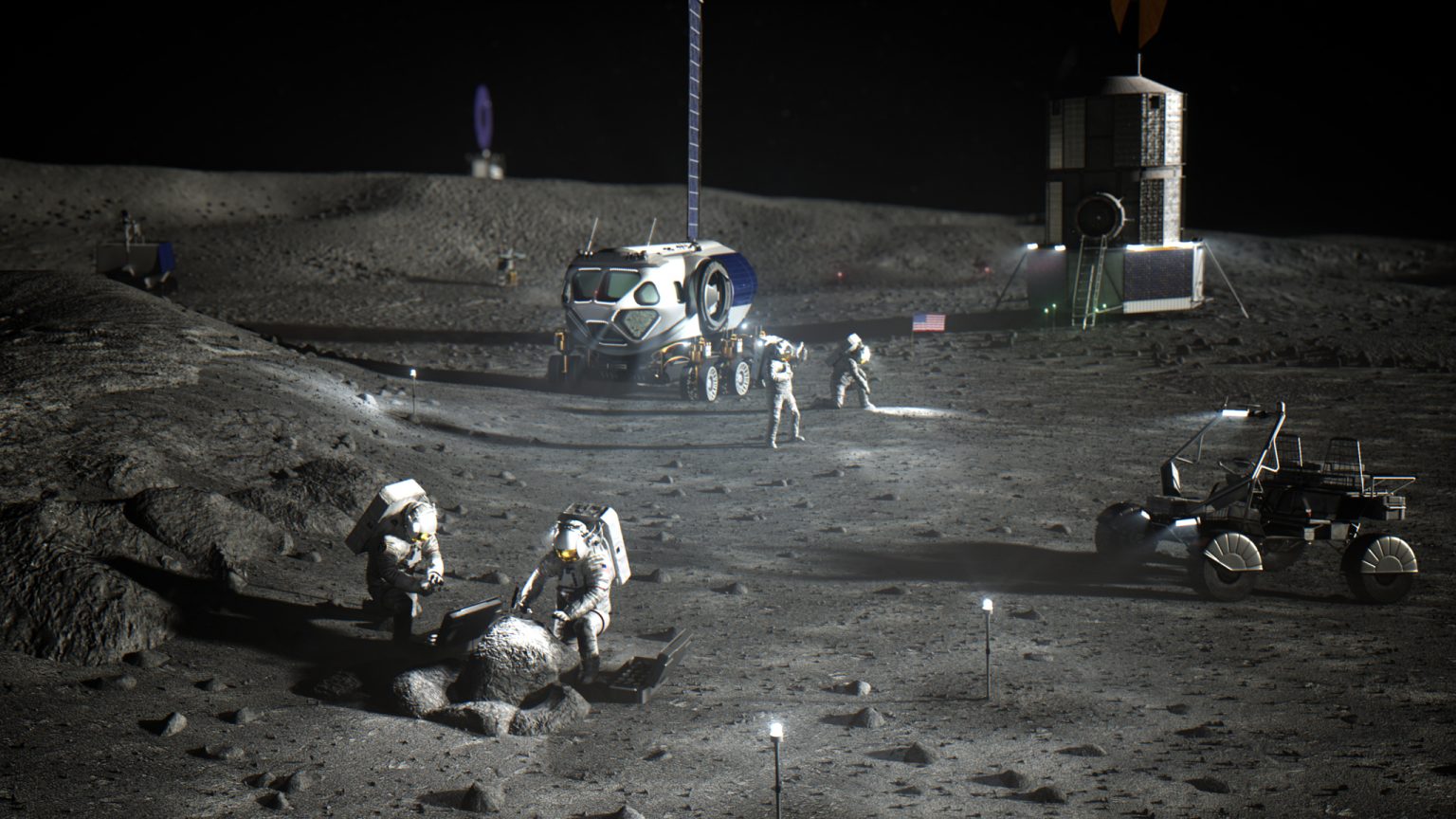
Even though the day when humans live and work on the moon is still in the unidentified future, NASA is actively planning for how to get us there.
To help one day provide the resources needed for a sustainable human presence on the moon, the agency's Space Technology Mission Directorate (STMD) is seeking input on methods to extract of oxygen from moon dust. This request will, in theory, allow industry and researchers to provide details on technologies that enable future moon-dwellers to produce, capture, and store breathable oxygen from lunar soil. NASA hopes to use the information it gathers to develop a technology demo.
This concept of using materials found on other bodies to make vital resources, rather than shipping them from Earth, is known as in-situ resource utilization, or ISRU. "Using in-situ resources is essential to making a sustained presence farther from Earth possible. Just as we need consumables and infrastructure to live and work on our home planet, we'll need similar support systems on the moon for crew and robots to operate safely and productively," Prasun Desai, NASA's acting associate administrator of STMD, said in a statement announcing the Request for Information, or RFI.
Related: NASA squeezed oxygen from mock moon dust. It could help astronauts breathe easy one day.
As support for this concept, NASA pointed to the Perseverance Mars rover's MOXIE experiment, which repeatedly transformed carbon dioxide from the Martian atmosphere into breathable oxygen. Though MOXIE only produced about 0.2 ounces (6 grams) — about equivalent to a small tree on Earth — its preliminary tests nevertheless proved the first time that a human device created oxygen on another world.
NASA believes a similar technology would be a tremendous boon to astronauts who will spend time on the moon in the future as part of its Artemis program. Producing oxygen on the moon means that astronauts need to carry less of it with them, saving valuable weight and allowing them to stay off-Earth for longer missions.
Before actually having astronauts try making oxygen for themselves, however, NASA plans to showcase the tech to do so as part of a demonstration it calls the Lunar Infrastructure Foundational Technologies (LIFT-1).
Get the Space.com Newsletter
Breaking space news, the latest updates on rocket launches, skywatching events and more!
In-situ resource utilization, turning readily available materials on other worlds into resources like oxygen, water, and metal, is one of the research areas NASA supports via its Lunar Surface Innovation Initiative. NASA conducts its own research and partners with external researchers to study living on the moon, looking into how to build lunar infrastructure, how to power that infrastructure, and how to protect that infrastructure from the lunar elements. LIFT-1 may include demonstrations of these technologies, too.
The Request for Information is open through 5 p.m. EST on Dec. 18. Additionally, NASA will host a virtual industry forum at 1 p.m. EST on Nov. 13.
Join our Space Forums to keep talking space on the latest missions, night sky and more! And if you have a news tip, correction or comment, let us know at: community@space.com.

Rahul Rao is a graduate of New York University's SHERP and a freelance science writer, regularly covering physics, space, and infrastructure. His work has appeared in Gizmodo, Popular Science, Inverse, IEEE Spectrum, and Continuum. He enjoys riding trains for fun, and he has seen every surviving episode of Doctor Who. He holds a masters degree in science writing from New York University's Science, Health and Environmental Reporting Program (SHERP) and earned a bachelors degree from Vanderbilt University, where he studied English and physics.









